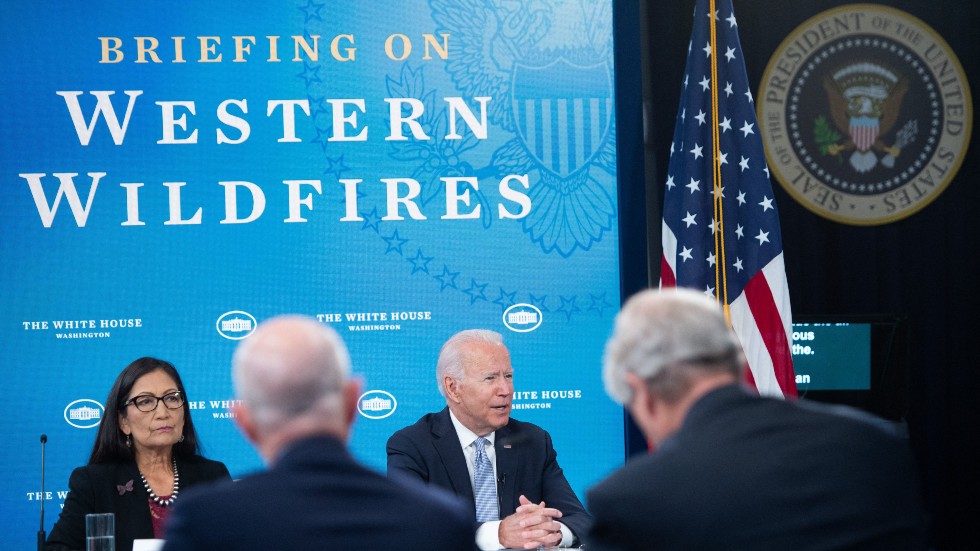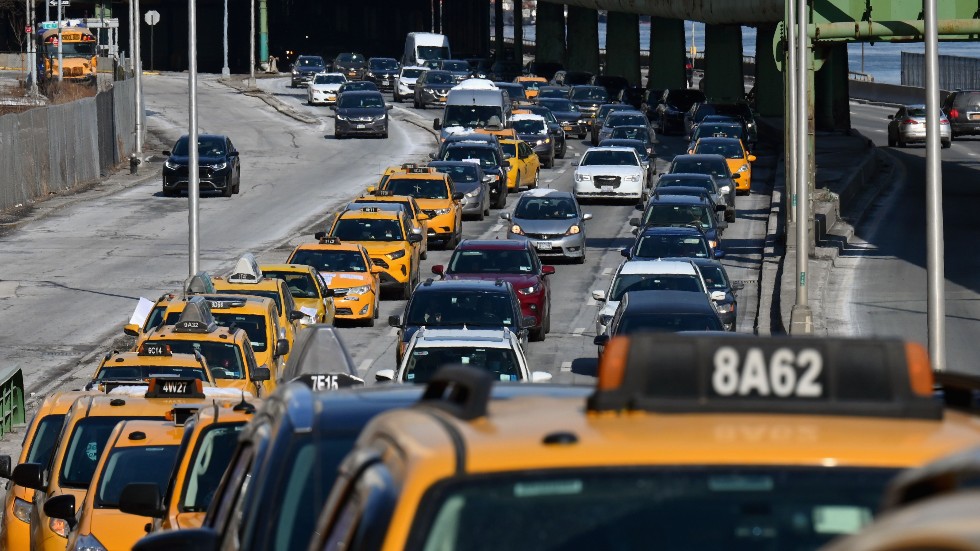Equilibrium/Sustainability — Presented by NextEra Energy — Knowledge is ‘rotting’ silently online
Today is Wednesday! Welcome to Equilibrium, a newsletter that tracks the growing global battle over the future of sustainability. Subscribe here: digital-staging.thehill.com/newsletter-signup.
The links that bind the internet together are “rotting” as surely as our physical infrastructure, Jonathan Zittrain wrote in The Atlantic.
It’s a subtle, creeping problem that threatens the sustainability of, say, this very newsletter, Zittrain says. Thanks to “gaps of responsibility” over who maintains storehouses of valuable information and the all-important connections between them, “links work seamlessly until they don’t.”
“And as tangible counterparts to online work fade,” he concluded, “these gaps represent actual holes in humanity’s knowledge.” Without a public repository of that data, we’re in for a vast deletion of culture, inadvertently caused by a system supposed to help remember everything.
While digital infrastructure erodes quietly online, on the physical plane, the heat is melting infrastructure out West, and drying out the region’s overstocked, underwatered forests — all of which translates to soaring risk of heat stroke in the cities and wildfire in the backcountry.
For Equilibrium, we are Saul Elbein and Sharon Udasin. Please send tips or comments to Saul at selbein@digital-staging.thehill.com or Sharon at sudasin@digital-staging.thehill.com. Follow us on Twitter: @saul_elbein and @sharonudasin.
Let’s get to it.
A MESSAGE FROM NEXTERA ENERGY
As the world’s largest producer of wind and solar energy, NextEra Energy is pioneering innovation on green hydrogen – the solution for deep decarbonization of hard-to-abate sectors. See how at NextEraEnergy.com.
Biden launches wildfire preparedness plan, acknowledging that ‘we’re late in the game’

President Biden announced plans to mitigate and control the seasonal wildfires that have already begun ravaging the Western U.S. this year, during a meeting with governors from the region on Wednesday.
The president stressed the urgency for “a coordinated, comprehensive response” and said that his administration would hold annual briefings to coincide with the start of the fire season, Zack Budryk reported for The Hill. Wildfires, Biden added, “are not a partisan phenomenon.”
“Right now, we have to act and act fast,” the president said. “We’re late in the game here.”
Biden’s steps to combat wildfires: Biden and Vice President Harris met with the governors just as the Pacific Northwest began to feel some relief from an unprecedented heat wave that struck the region over the weekend.
Here’s a brief outline of the administration’s plans, as detailed in a White House fact sheet:
- Firefighters get a boost in pay: Firefighters will make $15 an hour this year — minimum.
Meanwhile, permanent firefighters working on the front lines will receive up to a 10 percent bonus, and temporary workers who commit to continue this season will receive a $1,000 award.
- … And to their numbers: The Interior Department is hiring new firefighters and converting many seasonal workers to full-time, as well as funding new tribal land positions.
In addition to the 15,000 designated federal firefighters, the Forest Service and Interior can call upon 13,000 other employees and 11,000 outside personnel to support firefighting efforts.
Eleven states are now receiving federal funding to train National Guard members in firefighting operations, and the Forest Service has increased its airtanker and helicopter capacity.
- Use new technologies: The National Oceanic and Atmospheric Administration is partnering with federal and state agencies to roll out satellite-based early wildfire detection technology.
The Department of Homeland Security, meanwhile, is researching innovations that could also help detect and control wildfires.
Finally, the Forest Service has launched a “Firesheds” mapping unit that aggregates areas with similar fire behaviors and risks, and the Department of Energy is working on predictive analysis tools that will help foresee damage sparked by grid faults.
- …Show me the money: The administration said it will help communities at the start of severe fires through Federal Emergency Management Agency Fire Management Assistance Grants — rather than making them wait for remuneration after the damage had already been done.
The administration also committed $1 billion — twice the current number — to help harden communities against fire.
Longer-term funding for wildfire resilience could come from the contested bipartisan infrastructure deal, which would invest nearly $50 billion in resiliency efforts if passed by Congress. The White House’s budget request for fiscal 2022 also includes more than $30 billion to support wildfire management and disaster relief, as well as a 62 percent increase in funding to address biomass accumulation in targeted locations.
‘WESTERNERS CAN NOW BE ASSURED’
Western response: Biden’s announcement on Wednesday came just as record-breaking heat conditions were subsiding in the Pacific Northwest — where the triple-digit temperatures likely led to dozens of fatalities in the region. By Wednesday afternoon, Oregon’s state medical examiner had received reports of 63 deaths “that preliminary investigation suggests may be associated with the Pacific Northwest heatwave,” a state police spokesman told CNN’s Jon Passantino.
Sen. Ron Wyden (D-Ore.) commended the administration for its response to a request he made at a recent Energy and Natural Resources Committee meeting. In that address he demanded a clear strategy for the 2021 wildfire season.
“With record-breaking heat here in Oregon and across the American West, the next catastrophic wildfire weighs heavily on the minds of every living soul in the West,” Wyden said in a statement Wednesday.
Takeaway: When wildfire comes, Wyden said, Westerners can trust that all levels of government are ready to “make sure wildland firefighters, tankers and other wildland firefighting technologies are where they must be to protect lives and property when fires hit.”
INTERLUDE: BUT AT LEAST IT’S COOL IN CANADA, RIGHT?
Nope. Western Canada has also been facing the dire consequences of unprecedented heat, with police responding to at least 134 deaths over the three-day event, according to The Guardian.
The town of Lytton, in British Columbia, hit 121.1 degrees Tuesday afternoon, shattering the national record for the third day in a row, The Guardian said, citing figures from Environment and Climate Change Canada.
Forecasters said parts of British Columbia, Yukon and the Northwest Territories could experience some relief Wednesday, but the heat would persist in Canada’s prairie provinces, The Guardian reported.
A MESSAGE FROM NEXTERA ENERGY
We’re pioneering innovation on green hydrogen – the solution for deep decarbonization of hard-to-abate sectors. See how it can create jobs, accelerate economic growth and more at NextEraEnergy.com.
Fire scientists: Wildfire can be delayed, but not prevented

All that heat means this year’s fire season is shaping up to be very bad. As policymakers initiate plans to fend off wildfire damage, scientists warn that the blazes can be delayed with the right tools but not prevented.
That’s relevant because the help the White House is offering — firefighters and water-dropping planes — does a lot for “suppression.” But it was a hundred years of suppression, fire scientists say, that got us into this mess to begin with.
First steps: Our understanding of what wildfires are going to do is limited by our basic lack of understanding of what causes fires to spread, as Saul reported earlier this year for MIT Technology Review,
Much of that problem comes from a lack of experimental data, Mark Finney, the head of the Missoula Fire Sciences Laboratory — America’s only publicly funded wildfire lab — told Equilibrium. “You want to burn a 10-inch log, you have to burn a 10-inch log,” Finney told Equilibrium. “You can’t scale up from a popsicle stick.”
Delays in Missoula; fear in Washington: As soon as he finishes installing a new grain silo, Finney said, his team can start burning logs inside: They predict that a huge, enclosed space will let them control every aspect of airflow into the fire.
That will let them look at one of the biggest unanswered questions in fire science: the complex and poorly understood way that big, hot fires can create their own weather systems, which then buoy the power and speed of the fire.
At their worst, these systems top out in the dreaded pyrocumulonimbus — what NASA describes as “the fire-breathing dragon of clouds” — such as the flame that destroyed Paradise, Calif., in 2018. In such a system, a fire can build on itself in a series of feedback loops until it reaches nearly the border of space, creating simultaneous infernos across a landscape.
Technical fixes for coupled systems: These fire systems are scary for the same reason they’re difficult to model, fire science experts told the House Science, Space and Technology Committee on Tuesday. Wind, fire and fuel, they explained, interact in unpredictable, mathematically messy ways atop a landscape where ever more people live closer to dried out, fire-prone trees.
And in the ragged wildland-urban interface where forest meets city, not only are there more people, but there are “also more opportunities for fires to occur,” said George Geissler, a senior forester in Washington state.
Geissler and other experts told Congress that certain technical tools could help mitigate the new age of destructive fire. Some such tools could include better satellites — as proposed by the Biden plan — or weather stations to detect backcountry fire, as well as supercomputers like that of the National Weather Service devoted to fire prediction or other computational tools that map how very large fires move.
But long-term, Geissler said, “We have to get the fuel under control. We have to get those areas prepared for the interaction of fire that will inevitably come.”
More fire is better — but politically risky: One thing we know without any new research, Finney told Equilibrium, is that “fire will always happen, and your only choice is what kind and how to have it.”
Every year that policymakers put off facing this uncomfortable truth, he said, more trees grow up and die in the backcountry, meaning bigger fires to come as the landscape rebalances around a new drier, hotter paradigm.
Fire is the most cost-effective way to remove those fuels, Finney said. Prior to the arrival of European settlers in America, this method was used constantly by Native Americans, who managed landscapes with fire, according to Finney.
Today, the impact of a century of fire suppression is the current landscape of overstocked, dried out forests, waiting to burn. Neighborhoods hate the smell and irritation of prescribed burns, wrote Jessica McCarty, a professor of geography at Miami University, in her testimony to the science committee.
But in the long run, we can mitigate fire risk best “via prescribed burning and working with Indigenous fire practitioners to return cultural burning to the land,” she said.
Takeaway: “The choice is ours,” McCarty added. “Do we tolerate a few hours of smoke in the off season every year or do we wait until the sky has turned red and we are forced to evacuate?”
ROUND-UP
Wednesday on wheels

Today we’re tackling traffic — looking at what technologies might shape our transportation future, and how commuting might look different if we all continue to work from home.
NHTSA orders autonomous vehicle makers to report crashes
- The National Highway Traffic Safety Administration (NHTSA) on Tuesday ordered autonomous vehicle manufacturers to disclose any crashes involving self-driving cars, Joseph Choi reported for The Hill. The order applies to crashes on public roads involving fully autonomous vehicles, as well as those in which driver-assist systems were being used, according to The Associated Press.
- The regulatory shift comes after NHTSA has launched investigations into 31 crashes involving partially automated driver-assist systems since June 2016, the AP said. Of those crashes, 25 involved Tesla’s Autopilot system, in which 10 deaths were reported.
- Having this data on hand will help the industry learn from the failures of autonomous driving — helping “serve a variety of purposes from enforcing current laws, to ensuring the safety of consumers, as well as paving the way for reasonable regulations to encourage the deployment of safe advanced vehicle technology,” Jason Levine of the Center for Auto Safety group told the AP.
- The Self-Driving Coalition — whose members include Uber, Lift and Volvo — told The Hill that it shares the NHTSA’s goal of reducing deaths but stressed that “there must be a distinction between our members’ autonomous vehicles — which do not require human intervention to operate safely — and driver assistance technology like Tesla’s, which requires an attentive driver.”
NY tops LA for worst traffic in 2020, as pandemic ‘flattens congestion curve’
- The New York-Newark, N.J., region has dethroned Los Angeles-Long Beach-Anaheim for the worst traffic in the country — marking the first time in nearly three decades that the congested Californian city has not landed the top spot in the Texas A&M Transportation Institute’s annual mobility report, Celine Castronuovo reported for The Hill.
- The 2021 study, released this week, showed that although total traffic delays in 2020 dropped significantly due to the pandemic, New Yorkers spent 494,268 hours stuck in gridlock, while Los Angelenos devoted 365,543 hours to jams, according to The Hill.
- New York-Newark drivers spent an average of 56 hours in traffic, followed by Boston drivers at 50, Houston at 49 and only then Los Angeles-Long Beach-Anaheim at 46 hours, tied with drivers in the San Francisco-Oakland region, The Hill reported.
- The coronavirus shutdown period, according to the study, “occurred when America flattened the virus curve — and the congestion curve.” Acknowledging that the lasting effect of the pandemic on urban transportation systems is not yet clear, the authors stressed that “working from home, long an underappreciated solution, will certainly have a much bigger role after the pandemic experience.”
Well, what if we just flew over all that congestion, eh?
- Three minutes after landing at an Eastern European airport, AirCar Prototype 1 was on the road again — its wings and tail retracted back into the body of a sports car, Christopher Brito reported for CNBC
- Flying cars — like AirCar’s “dual-mode car-aircraft vehicle,” as the company calls it — could be standard in Europe by 2030, Michael Cole, the European head for carmaker Hyundai, told The Guardian.
- Of course, flying cars are one of those technologies that’s always been “about 10 years away.” And flying cars represent particular sustainability challenges, too; planes are much further from being electrified than cars are.
- Still, Hyundai is part of a consortium pioneering the world’s first zero-carbon, runwayless airport in Coventry, U.K. — a “eVTOL” hub, for flying vehicles that can take off and land vertically using only electric power, Aviation Today reported in February.
{mosads}In the coming days, we’ll turn back to our favorite acronym, ESG, and explore how investors are eager to see payments from funds going back to communities on the frontlines of deforestation. We’ll also look at how Gen-Z Republicans may be shaping how the GOP sees climate change.
That’s all for today at Equilibrium. We’ll see you on Thursday evening.
-Updated 7:54 p.m.
Copyright 2024 Nexstar Media Inc. All rights reserved. This material may not be published, broadcast, rewritten, or redistributed..















